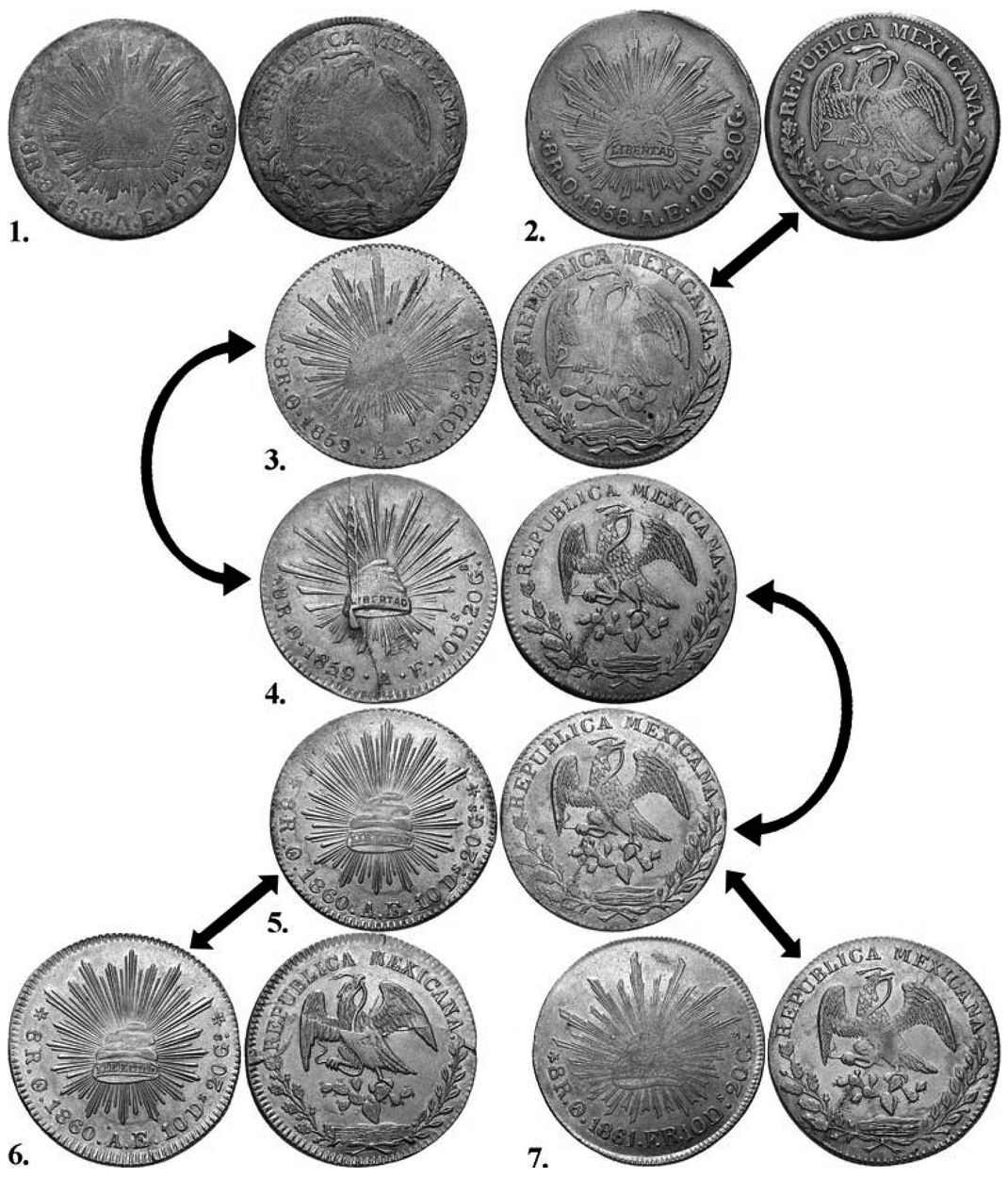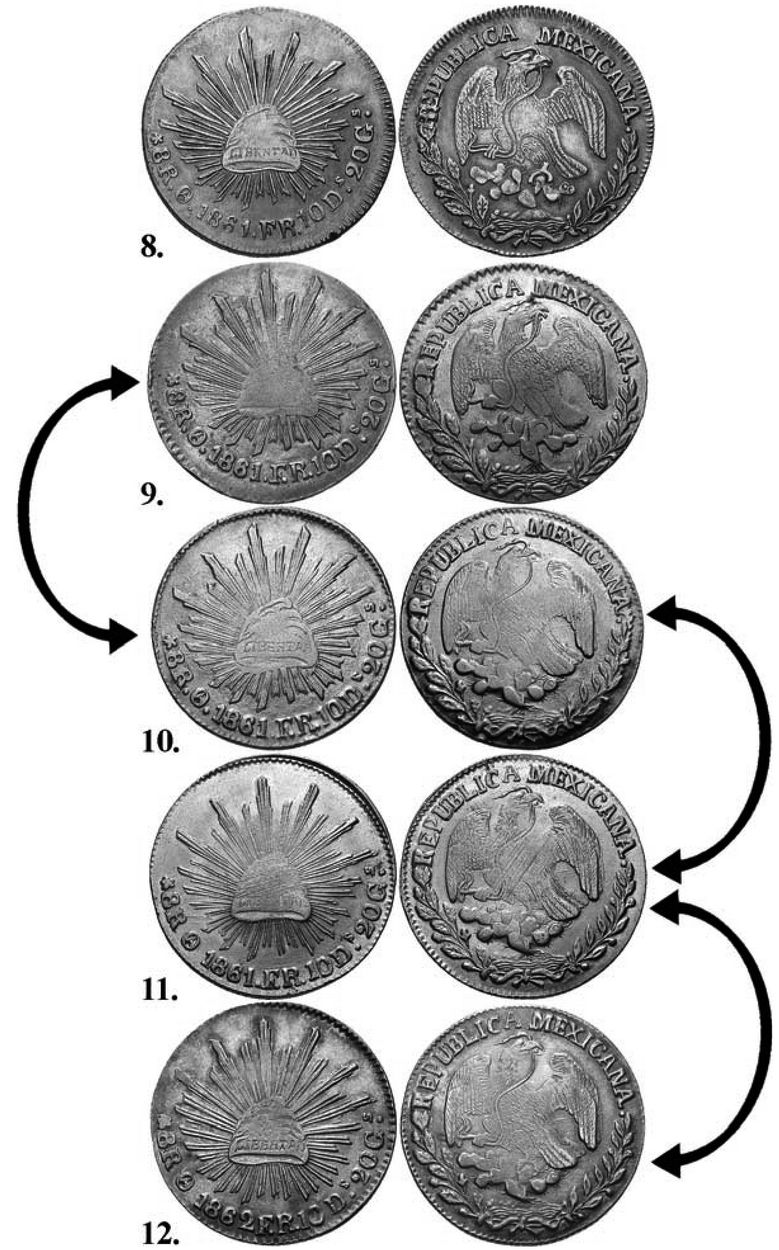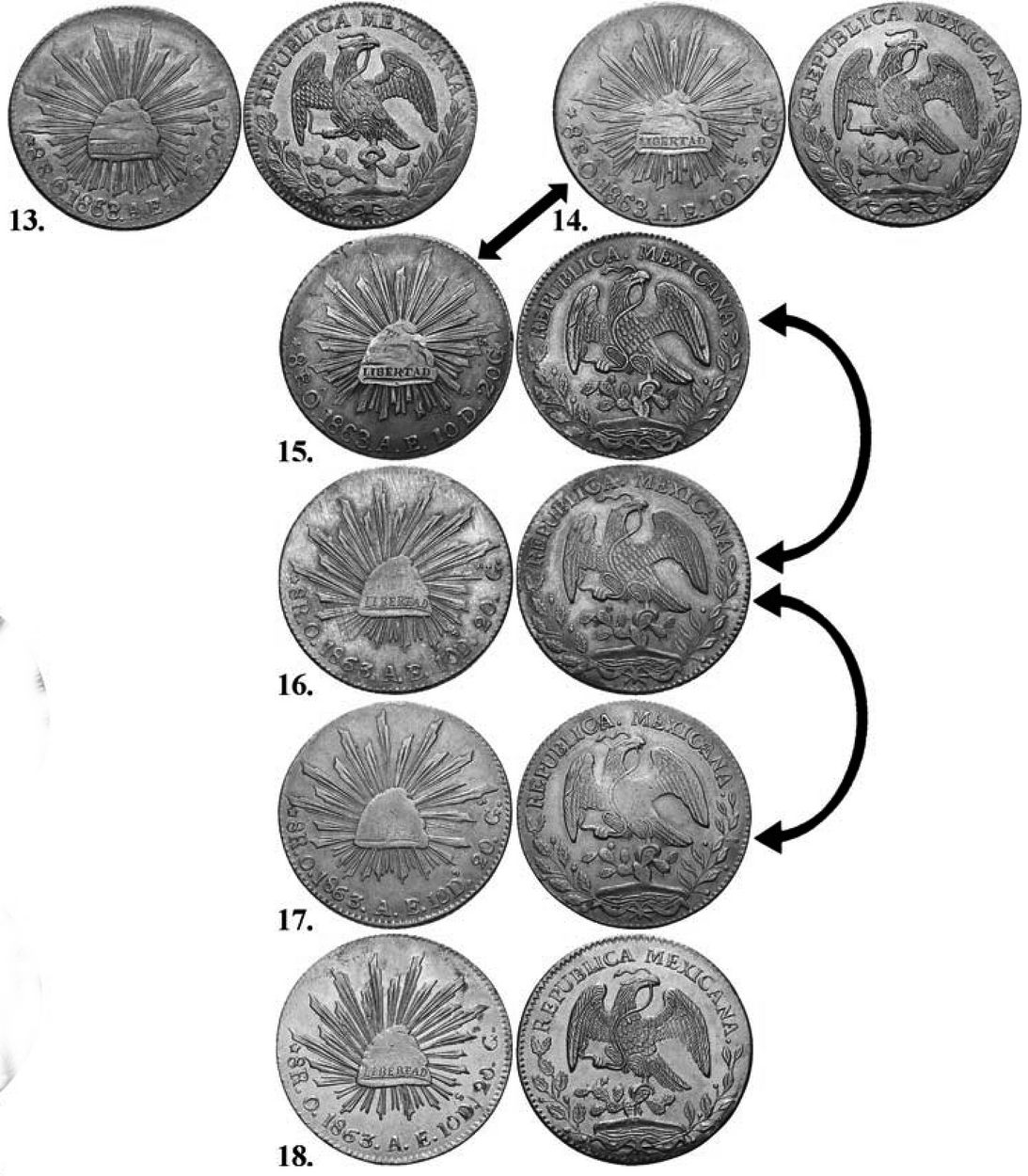Early Die Lineage of the First Oaxaca Mint
By Kent Ponterio
The early 8 Reales of the first Oaxaca mint reflect a wide variety of interesting die varieties, each drastically different from one another in quality of workmanship and artistic expression. Within the span of a few years, styles range from quite detailed and well-executed to what could be described as among the poorest quality in the entire Cap & Ray series. It is fairly evident from the coins themselves that the Oaxaca mint encountered numerous problems in its early years of production including flatness of strike and improperly annealed dies that wore out or broke prematurely. Clearly, the mint was operating at a technologically level inferior to that of other Mexican mints.
One of the most interesting features of these early coins is that they permit us to correlate the coins to each other and thus trace the die lineage. Several of this period’s early die styles were produced in very small quantities and in some cases, only one set of dies were made. This permits us to link one style to the next in a conclusive manner. For example, the reverse die of the 1858-0 (fig. 2) is the same as that for the 1859-Oa (fig. 3).

However, the obverse die style of the 1859-Oa is unique to this year (figs. 3-4). Coins from this die often have large vertical die crack, sometimes spanning the entire length of the die, confirming that this die style was only used in 1859. Obviously, the die broke and became so damaged that is could no longer be used, leading to a new obverse die style the following year. As is evident from the diagonal die crack (starting at about 7 o’clock), the first issue of 1860 (fig. 5) continued using the same reverse die of the 1859. It appears that this die was retired temporarily since the second issue of 1860 (fig. 6) uses a reverse die unique to this year. However, the second reverse die used in 1860 seems to have not lasted very long. As it is clear from the coin pictured in fig. 6, this reverse die had broken to the point where it could no longer be used. Due to its extreme rarity, it is certain that this reverse die broke fairly early after its production.
The coin pictured in fig. 7 represents a previously unpublished muling in which the obverse die style of 1861-1862 is paired with the reverse die of 1859-1860. Apparently, after the reverse die of 1860 broke, the mint reverted to using the reverse die 1859-1860, since that die was still functional. This coin, along with several other examples was part of a large hoard of Oaxaca mint 8 Reales of this period found in the 1990s.
In terms of the quality of its die workmanship, the coinage of the die style of 1861-1862 can be considered among the crudest in the entire Cap & Ray series. The overall design elements lack artistic refinement, the letters in the legends are placed unevenly and crudely engraved local punches replace worn out or broken punches (e.g., the “EP” of “REPUBLICA”, see figs. 9-12). As with the previous dates in this series, these coins exhibit multiple problems in manufacture, such as flatness of strike, improperly annealed dies, etc. However, unlike the earlier coinage, many different dies were produced in the style of 1861-1862, some examples of this can be seen in figs. 8-12.

In 1863, a reformation took place and remedied many of the problems associated with the coinage issues of the previous two years. Several new die styles were introduced and gradually evolved until the end of 1863, at which point the mint ceased to strike coins until it re-opened in 1867 (see figs. 13-18, for examples).

